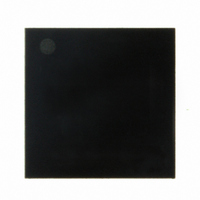TRC103 RFM, TRC103 Datasheet - Page 50

TRC103
Manufacturer Part Number
TRC103
Description
RFIC TRANSCEIVER MULTI-CHANNEL F
Manufacturer
RFM
Series
TRCr
Datasheet
1.TRC103.pdf
(64 pages)
Specifications of TRC103
Frequency
863MHz ~ 960MHz
Data Rate - Maximum
100kbps
Modulation Or Protocol
FSK, OOK
Applications
General Purpose
Power - Output
11dBm
Sensitivity
-112dBm
Voltage - Supply
2.1 V ~ 3.6 V
Current - Receiving
4mA
Current - Transmitting
30mA
Data Interface
PCB, Surface Mount
Antenna Connector
PCB, Surface Mount
Operating Temperature
-40°C ~ 85°C
Package / Case
32-QFN
Lead Free Status / RoHS Status
Lead free / RoHS Compliant
Memory Size
-
Other names
583-1095-2
average-referenced threshold applications, F
mitting a long sequence of bits of the same value, such as the TRC103’s data scrambling or Manchester encod-
ing options.
The peak-referenced threshold is generated from the RSSI signal using a fast attack, slow decay peak detector
emulation. The slicer threshold is immediately set to 6 dB below the peak value of the RSSI signal anytime the
RSSI value exceeds the threshold by 6 dB. The threshold then decays by a configurable dB step when a config-
urable interval passes without the RSSI signal peaking 6 dB above the threshold. The decay step is configured
with RXCFG15 bits 7..5 as shown in Table 60:
The decay interval is configured with RXCFG15 bits 4..2 as shown in Table 61:
The chip period t
ing, the chip period is equal to ½ the bit period:
Where t
provide a good starting point for most applications. For application environments that contain pulse noise, such as
operation in a band where other FHSS systems are operating, using Manchester encoding and decreasing the
decay interval to twice or four times per chip and/or increasing the decay step to 1 dB will reduce the “blinding”
effect of pulse noise. Multipath flutter tolerance is also improved by using Manchester encoding and decreasing
the decay interval and/or increasing the decay step size.
6.3.3 OOK Transmitter Related Configuration Values
MCFG0C bits 4..3 allow the rise and fall time of the power amplifier regulator to be adjusted. Using the default
component values for R6 and C5 as shown in Figure 2, the rise and fall times for the power amplifier regulator
and the OOK modulation are given in Table 62:
www.RFM.com
©2009-2010 by RF Monolithics, Inc.
least 24 bits is recommended for F
CP
t
CP
is in ms and BR is in kb/s. The default values of 0.5 dB per decay step and 1 decay interval per chip
= 1/BR without Manchester encoding, t
E-mail:
CP
is equal to the bit period except when Manchester encoding is used. For Manchester encod-
info@rfm.com
CAS
Pattern of Bits 7..5
Pattern of Bits 4..2
, and a preamble of at least 48 bits is recommended for F
Technical support +1.800.704.6079
CAS
000
001
010
011
100
101
110
111
000
001
010
011
100
101
110
111
should be used in conjunction with a mechanism to avoid trans-
CP
Table 60
Table 61
= 1/(2*BR) with Manchester encoding
four times per chip
16 times per chip
once per 2 chips
once per 4 chips
once per 8 chips
8 times per chip
Decay Interval
twice per chip
once per chip
Decay Step
0.5 dB
1.0 dB
1.5 dB
2.0 dB
3.0 dB
4.0 dB
5.0 dB
6.0 dB
CAL
. For most
TRC103 - 12/15/10
Page 50 of 64

















